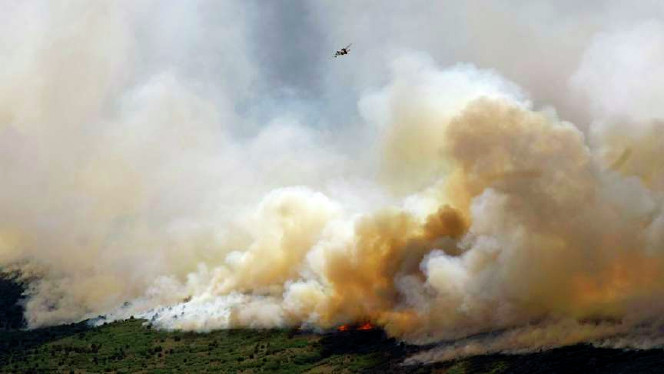When Disaster Strikes, Volunteer Efforts Are Crucial

LINCROFT, N.J. -- As Superstorm Sandy made landfall in New Jersey last October, many residents who had lived in harmony with the oceans, rivers and bays of New Jersey for decades found themselves in life-threatening situations.
The emergency inspired hundreds of heroic acts. Among them:
- In Brick, a couple who were lifeguards saved some 50 people from the floods.
- A Vespa-riding school teacher carried gas and emergency supplies for people in desperate need of help.
- An off-duty nurse delivered a baby by the side of the road.
- A volunteer firefighter braved chest-deep water to rescue his neighbors.
In all of the areas impacted by the storm, people performed extraordinary acts of bravery and compassion.
Neighbors helped neighbors, community volunteers including first aiders and firefighters worked around the clock to rescue those in need and protect the safety of their neighbors.
And as the wind, rain and flood waters, receded, a veritable army of volunteers joined forces in the recovery effort.
As the one year anniversary of this historic storm approaches, it is a good time to remember and celebrate the role of volunteers in helping the residents of New Jersey meet the enormous challenges they faced in the weeks and months of recovery that followed the storm.
To date, 507 volunteer organizations have participated in the recovery effort in New Jersey. Of those, 124 have reported 166,598 volunteers who have contributed 951,731 hours worth $26.8 million.
“In a disaster such as Superstorm Sandy, the efforts of volunteers are critical to the recovery,” said Gracia Szczech, federal coordinating officer for FEMA in New Jersey. “The work of volunteers contributed substantially to helping New Jerseyans respond to the challenges they faced and begin their recovery.”
A coalition of volunteer organizations, the National Voluntary Organizations Active in Disaster (VOAD), has worked with federal, state and local agencies to provide a wide range of services to New Jerseyans as they moved forward with their recovery.
FEMA supported their efforts by identifying populations with access and functional needs, identifying available federal assistance programs and providing coordination and donations management. Together, the agencies form a Long Term Recovery Group (LTRG). FEMA’s Voluntary Agency Liaisons work with the voluntary groups at the state and local levels and also refer people to the LTRG for help with specific needs.
The voluntary organizations’ work includes helping with flood debris cleanup as well as home repairs and reconstruction, providing short-term food, clothing and shelter assistance, and counseling services.
Among the local and national VOAD organizations that have been active in the continuing recovery are: the American Red Cross, the Community Food Bank of New Jersey, Church World Service, World Renew, UMCOR (United Methodist Church), Mormon Helping Hands, Operation Hope, United Church of Christ, Catholic Charities, NECHAMA (Jewish Response), ICNA (Muslim Humanity) Rebuilding Together, Habitat for Humanity, Lutheran Disaster Response, Presbyterian Disaster Services, the Salvation Army, certain United Way organizations as well as faith-based volunteers from numerous other denominations, individual churches, synagogues and mosques.
Posted from www.fema.com
Release date: AUGUST 23, 2013
Release Number: 4086-211
FEMA's mission is to support our citizens and first responders to ensure that as a nation we work together to build, sustain, and improve our capability to prepare for, protect against, respond to, recover from, and mitigate all hazards.
Follow FEMA online at www.fema.gov/blog, www.twitter.com/fema, www.facebook.com/fema, and www.youtube.com/fema. Also, follow Administrator Craig Fugate's activities at www.twitter.com/craigatfema.
The social media links provided are for reference only. FEMA does not endorse any non-government websites, companies or applications.
 "Storing away enough food and water in case of disaster, job loss or something worse is not just part of the
"Storing away enough food and water in case of disaster, job loss or something worse is not just part of the 
























